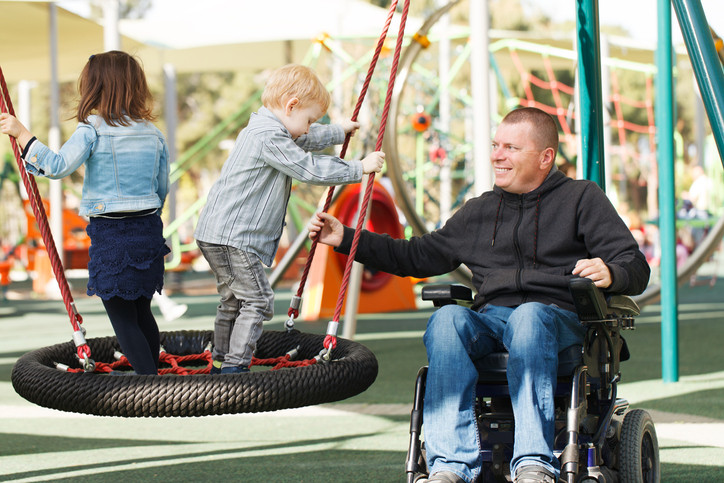

Wheelchairs restore mobility to people who are unable to walk or have limited ability to do so. Over a lifetime, this may describe many of us due to changes in health, injuries, neurological conditions, or disabling conditions like arthritis. So, when wheelchair technology or parts quit working, a quick fix would seem essential, right?
I know this firsthand. Unable to walk from decades with multiple sclerosis, I keep small scooters on every floor of my 1911 home, which is further adapted for accessibility with stair lifts and ramps. One day when I turned on my second-floor scooter-type wheelchair, sparks arced from the tiller opening atop the steering column, followed by smoke and the acrid smell of burning electrical wires. It was late on a Friday afternoon. No emergency repair service exists for wheelchairs or scooters. Now what?
Contents
Wheelchair repair delays are far more than an annoyance
Wheelchairs allow millions of Americans with mobility disability to participate in daily activities and community life (note: automatic download). We know this improves physical and mental well-being and overall quality of life.
On that Friday, my only option was to have my husband bring my first-floor scooter to the second floor. There I stayed, awaiting repairs on the now-inoperable scooter while my husband brought my meals upstairs. Because I have used the same small assistive technology company for more than 20 years — and have the owner’s cell phone number — by midafternoon on Tuesday, I once again had functional scooters on both floors. My confinement had lasted only four days. I know I was lucky on many levels.
But what if I lived alone, didn’t have another operational scooter, or hadn’t been able to wait four days? And what about people experiencing far longer waits for help with an essential device? While the 1990 Americans with Disabilities Act (ADA) prohibits discriminatory policies and requires physical accessibility in public services and spaces, it says nothing about this issue.
How often do wheelchairs break down?
Ideally, a wheelchair should be safe, reliable, and match your activity goals and functional needs. It should provide strong postural support and seating that protects against pressure injuries. Depending on strength and endurance, you might wish to self-propel a manual wheelchair. Or you might need a mobility scooter or power wheelchair propelled by a battery-powered motor, one that might even have sip-and-puff operational assistance or a chin-operated trackball.
Regardless of complexity, however — from basic manual wheelchairs to sophisticated rehab power chairs — all wheelchairs can break down, leaving their users stranded. Factors like broken pavement, inadequate curb cuts or soft terrain, steep inclines and inclement weather, and poor wheelchair design pretty much guarantee this.
In one study of 591 wheelchair users with spinal cord injury, 64% reported needing at least one wheelchair repair in the past six months. Among users requiring just one repair, wheels and casters posed the most difficulties for manual wheelchairs (46%). Electrical systems (29%) and power/control systems (27%) caused most problems for power wheelchair users. Rates of wheelchair breakdowns have increased in recent years, and vary across wheelchair manufacturers.
Repairs are costly, in more than one way. A survey of 533 wheelchair users with spinal cord injury found:
- Out-of-pocket repair costs ranged from $50 to $620 (the median, or midpoint, cost was $150).
- Time spent experiencing adverse consequences from wheelchair breakdown before repair ranged from two to 17 days (five days was the median).
- Among those reporting adverse consequences, 27% were stranded inside their home, 12% were stuck in bed, and 9% were stranded outside their home.
Wheelchair repair delays are lengthening: Could right to repair laws help?
Lengthening repair delays (automatic download) that heighten risks to consumers’ physical and mental health have caused many wheelchair users across the US to voice their outrage. However, reducing repair wait times isn’t simple. Medicare moved to competitive bidding in 2011, causing most small vendors — like my assistive technology company — to leave the business.
The two behemoths owned by private equity firms that now dominate the marketplace focus on boosting profits and cutting costs. By reducing technician hours and parts inventories, restricting consumers’ access to parts and software passcodes, requiring pre-approvals from insurers for repairs, and other practices, these companies virtually ensure delayed repairs.
Furthermore, Medicare and other insurers do not pay for preventive maintenance such as tightening loose bolts and cleaning casters, allowing problems to go undetected until breakdowns occur. Training can allow some wheelchair users to perform preventive maintenance tasks, but such training programs are not widely available.
Trying to reduce repair delays, Colorado’s governor recently signed the first “right to repair” law in the US for power wheelchair users. Complex software programs control many functions of power wheelchairs, and by holding this software as trade secrets, the manufacturers and large vendors have forced consumers needing repairs to use their services.
Much like recent right to repair laws for cars, the Colorado law mandates that power wheelchair owners and independent repair shops have access to the embedded software tools, parts, and other resources required to diagnose, maintain, or repair power wheelchairs. Other states, such as Massachusetts, may follow. Power wheelchair users in Massachusetts are testifying at public hearings about their repair horror stories to motivate the legislature to act.
Given the complexities of the wheelchair industry, it’s not clear whether right to repair laws will shorten repair times for power wheelchairs. Additionally, this law does not address manual wheelchairs or scooters like mine. Clearly, much more remains to be done to ensure timely wheelchair repairs. As wheelchair use surges, with growing numbers of baby boomers with mobility disability wanting to remain active in their communities, solving the wheelchair repair crisis is increasingly urgent.
[“source=health.harvard”]




